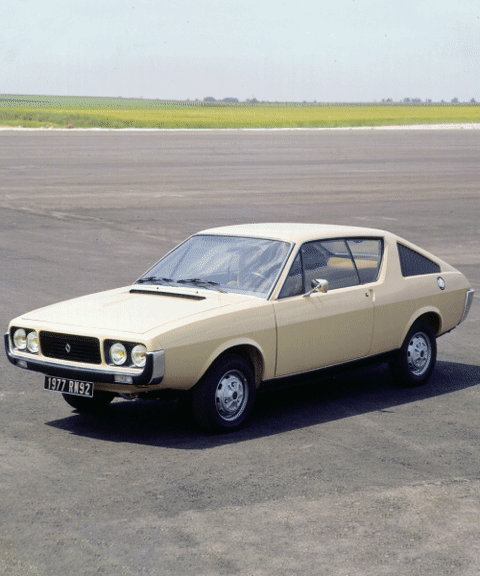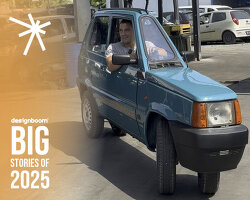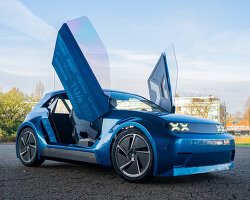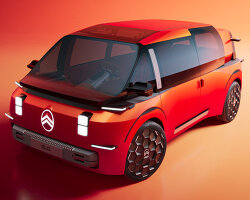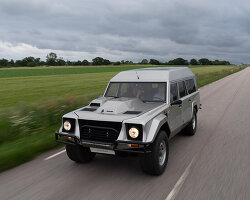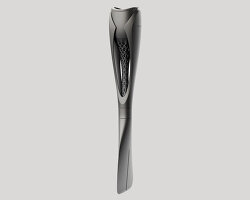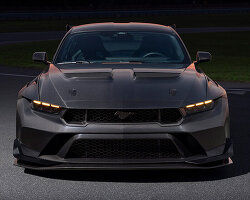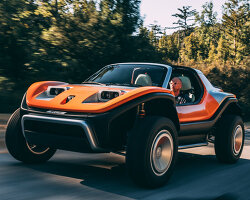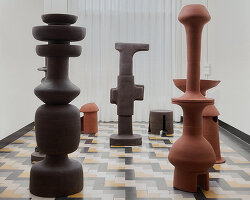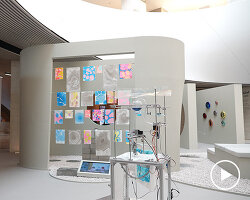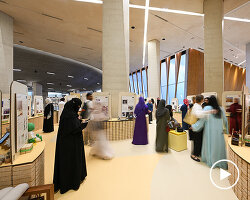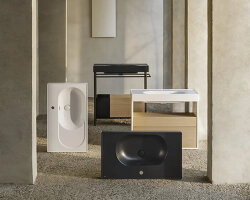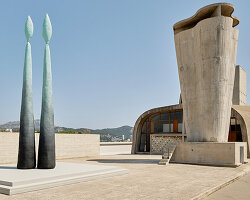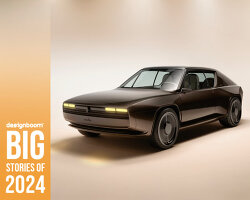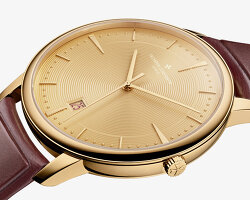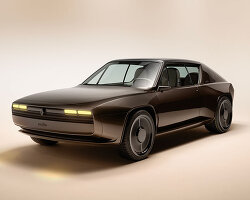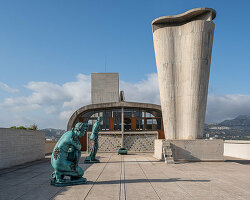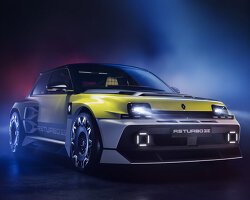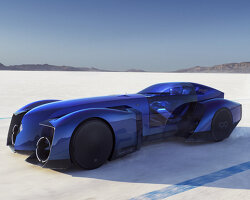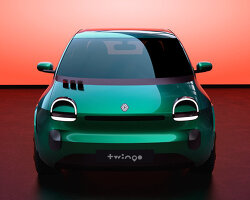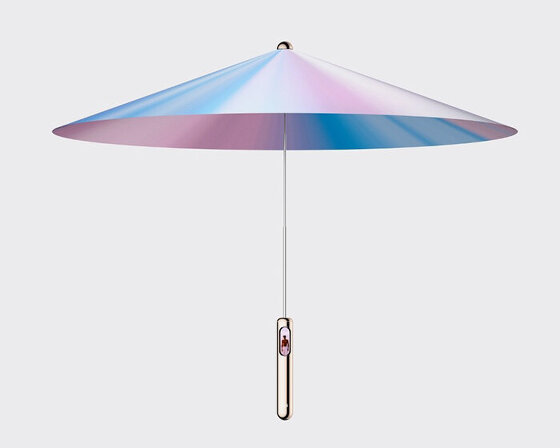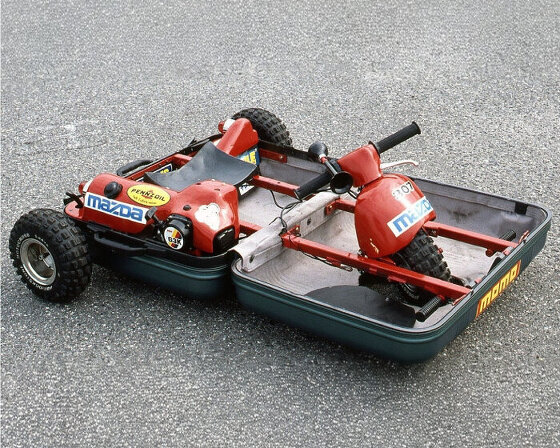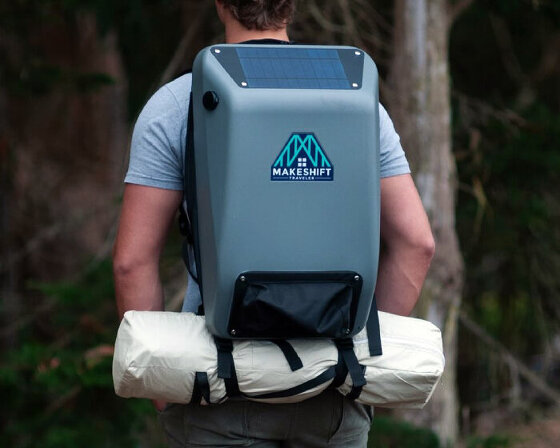RENAULT’s ‘R17’, an ELECTRIC RESTOMOD BY ORA ÏTO
Ora Ïto has redesigned Renault’s classic R17 coupe into a retro-futuristic car, a follow-up to Sabine Marcelis’ Twingo electric show car in 2023. Collaborating with designers has been an ongoing tradition for the car manufacturer since 2021. Every year, they pick a classic car from their portfolio, and a designer comes in to add their flair and put a new spin on a historic vehicle. They’re not all the same, both the car models and the visual language of the designers.
During his interview with designboom, one day after the show car’s debut, it’s obvious that the French designer and his electric restomod are both fun and nostalgic. At one point, he tells us he can imagine the British spy Austin Powers driving the 2024 Renault R17. It makes sense because he bridges the past and present in the car design, at times referencing pop culture from the 1970s or earlier decades while using modern car designs like the refreshed headlamps and carbon fiber chassis, to name a few.
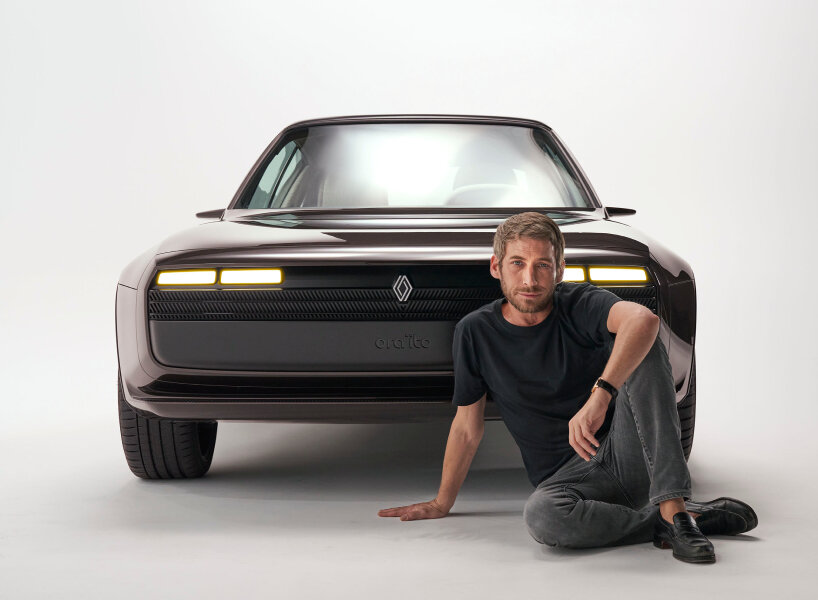
all R17 photos by Lionel Koretzky, courtesy of Renault | all archive images courtesy of Renault
CINEMATIC DESIGN LANGUAGE FOR RENAULT R17
The Renault R17 electric restomod feels the same but looks different from its 1970s sibling. They have the same cabin, doors, windows, glazing, seals, and underbody. Now, it has a bigger body, a single strip for the rear lights, four round headlamps, frameless doors, a body with no central pillar, fully opening rear side windows, and second-quarter windows with louvers, among other things. But when viewers look at the vehicle, it’s not cluttered. These parts fall into place thoroughly. As Ora Ïto tells designboom during our interview, the car’s design is cohesive and unified.
It’s almost cinematic, and perhaps it is. The French designer mentions the movies 2001: A Space Odyssey, The Shining, and Back to the Future (because of the DeLorean). They’re not direct influences, but their aesthetics and the filmic vibe that the Renault R17 electric restomod gives off match and meet halfway. ‘I can even imagine Ed Sheeran presenting a new album with this car,’ Ora Ïto admits to designboom, his words coming out in rapid fire as he touches on a variety of topics at once. Then, he adds that the car itself embodies all the things he loves: simplicity, clarity, and geometric harmony. The reason behind this lies in his very own design ethos.
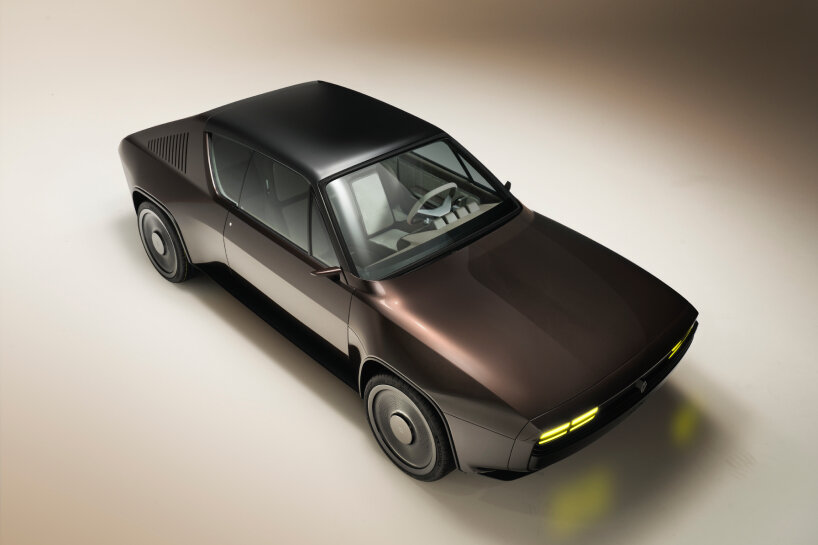
Ora Ïto has redesigned Renault’s classic R17 coupe into a retro-futuristic car
‘SIMPLEXITY’ IS THE WAY ORA ÏTO APPROACHES DESIGN
Ora Ïto speaks the language of making complex design simple, or as he coins it, simplexity. For him, there’s no need for an extremely distinct look for the electric restomod. He doesn’t want his car to look like a Transformer (and yes, he means the transformable robots from the movies). There are too many details in those designs, too much noise for him. So many elements to see that they disorient the viewers. What he wants is something easy to look at, and there’s no better way to explain it than by gazing at the Renault R17 redesign.
It’s not a one-man team. He worked with the Renault team, led by Sandeep Bhambra and Gilles Vidal. At one point in our interview, we asked if there were times they had to compromise. Zero, zip, zilch, nada, even if there were talks about the yellow lights of the front headlamps. ‘I didn’t like the yellow line because it was white before, but now that I see it, I have to say this is something I really love, and I wouldn’t change it,’ Ora Ïto shares with designboom.
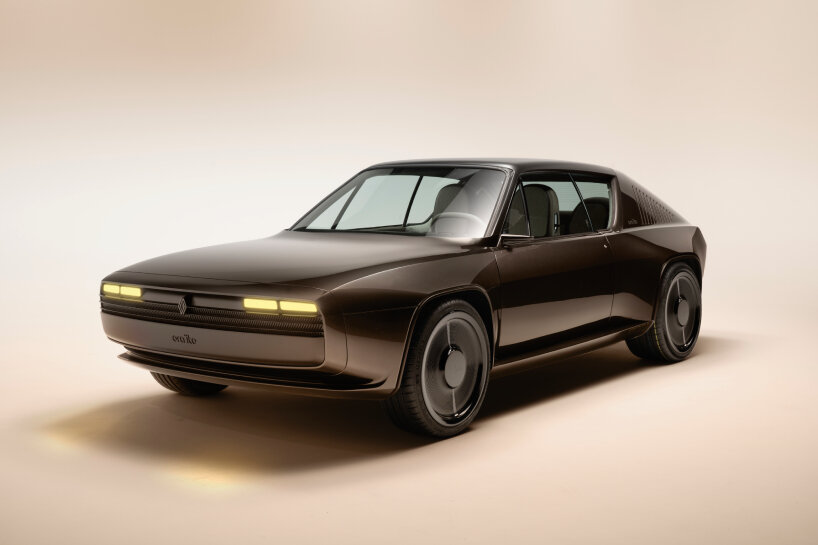
the R17 is a follow-up to Sabine Marcelis’ Twingo electric show car in 2023
The outside is retro-futuristic, but the inside is domestic. The interior of the Renault R17 electric restomod recalls the living room of earlier decades, a time when minimalism may have only started to emerge and peak, a period of fuzzy materials for the flooring, seats, and even walls. When viewers step inside the electric restomod, it might feel like they’re transported back to this era, even with a taste of the 1950s setup. When we described it as such, Ora Ïto affirmed the observation. ‘The goal was to create interiors that don’t resemble a typical car interior,’ he says.
‘There’s also something unique when you’re inside and close the doors—the silence and the smell. It doesn’t smell like a car; it smells like a living room,’ he explains to designboom, among other things, including the visual elements that can help the electric restomod be distinctive, his design language, and the ways he combined architecture, product design, and furniture into a car. Amidst his thoughts, Renault’s Chief Designer Sandeep Bhambra chimes in and lets us in on why the R17 was chosen this year, the design relationship between Renault and the French designer, and how the coming of the electric restomod can influence the visual and technical directions of future Renault models.
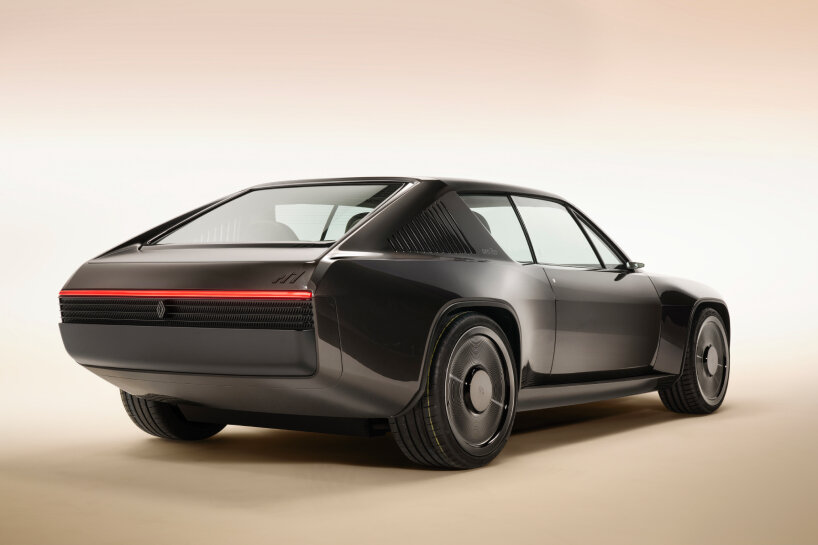
collaborating with designers has been an ongoing tradition for the car manufacturer since 2021
INTERVIEW WITH ORA ÏTO AND RENAULT’S SANDEEP BHAMBRA
designboom (DB): Reviving retro models is becoming a popular trend in the car industry. What inspired you to choose a model from the 1970s as the foundation for this concept car?
Sandeep Bhambra (SB): It was a choice by the Renault Brand to do this because it’s a bit of a special car for us. It’s a four-seat coupe, which is quite cool. Secondly, it’s designed by the same designer who did the R5, Michel Boué. Since we are relaunching the R5, having another car designed by the same designer was quite interesting for us. That’s why we chose this car.
DB: And Ïto, your work often uses a contemporary language and simplicity, so much so that you’ve coined the term ‘simplexity’. Was it challenging to apply this philosophy to this project knowing that you might need to stay faithful to the original 1970s Renault model?
Ora Ïto (OI): Yes. Basically, we used the original mode as a base for the new model. There is a lot of the old model in the new one. My work was to really analyze the car. I looked around a lot to identify where we could change things. With Sandeep and the Renault team, we checked all the parts that could be changed, and I started working in a more design and architectural way on the front, rear, side, and top. Basically, almost everything except the glass and the door because those have a mechanism, and we couldn’t change them. It would have been a completely different project. So, that was the main constraint, let’s say. And around that, the idea was to make better proportions, emphasize the design, put out everything that doesn’t have a need anymore, and make it more simple but also more aggressive, more modern, and more elegant. So, there is flight to a change in this car.
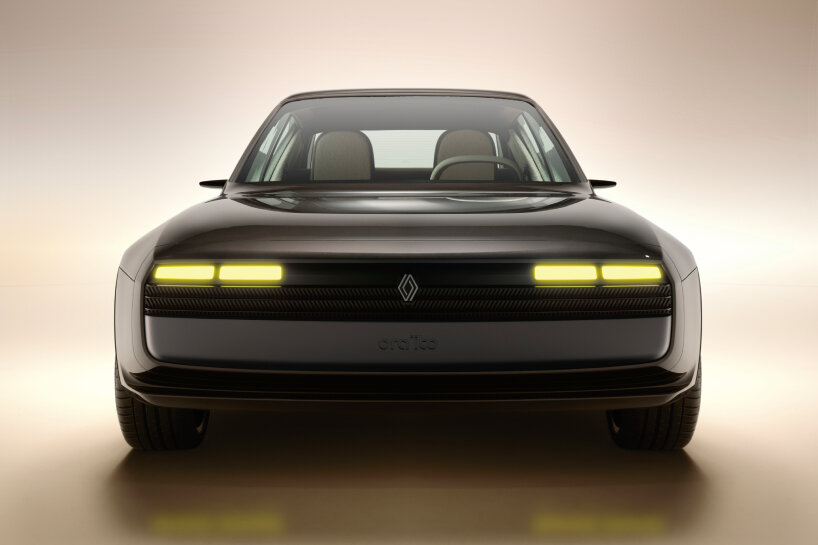
at times, the electric restomod references pop culture from the 1970s or earlier decades
DB: What key features of the car’s design then do you think make it more distinctive than the rest of the Renault models?
OI: I looked at the original car. My first idea was a shark. I saw a shark, so my idea was to emphasize this idea and also implement a kind of gimmick on the bottom of the car. If you look at the calendar, beside the calendar, you have the mouth of the shark. A nice shark, not a bad shark, because I think it looks quite nice as if it were a good person with a lot of determination. This was the idea that started the project.
SB: Honestly, it’s not a new model per se because we’re just doing a restoration plus a car that exists. So we couldn’t go all the way, right? If we were to do a completely new car, it would be much more futuristic. What we decided to do here is to try to respect the R17, which was popular for us, and then remove things from it to leave very few things on the car. Whatever is left is really well done, right? That was the whole idea.
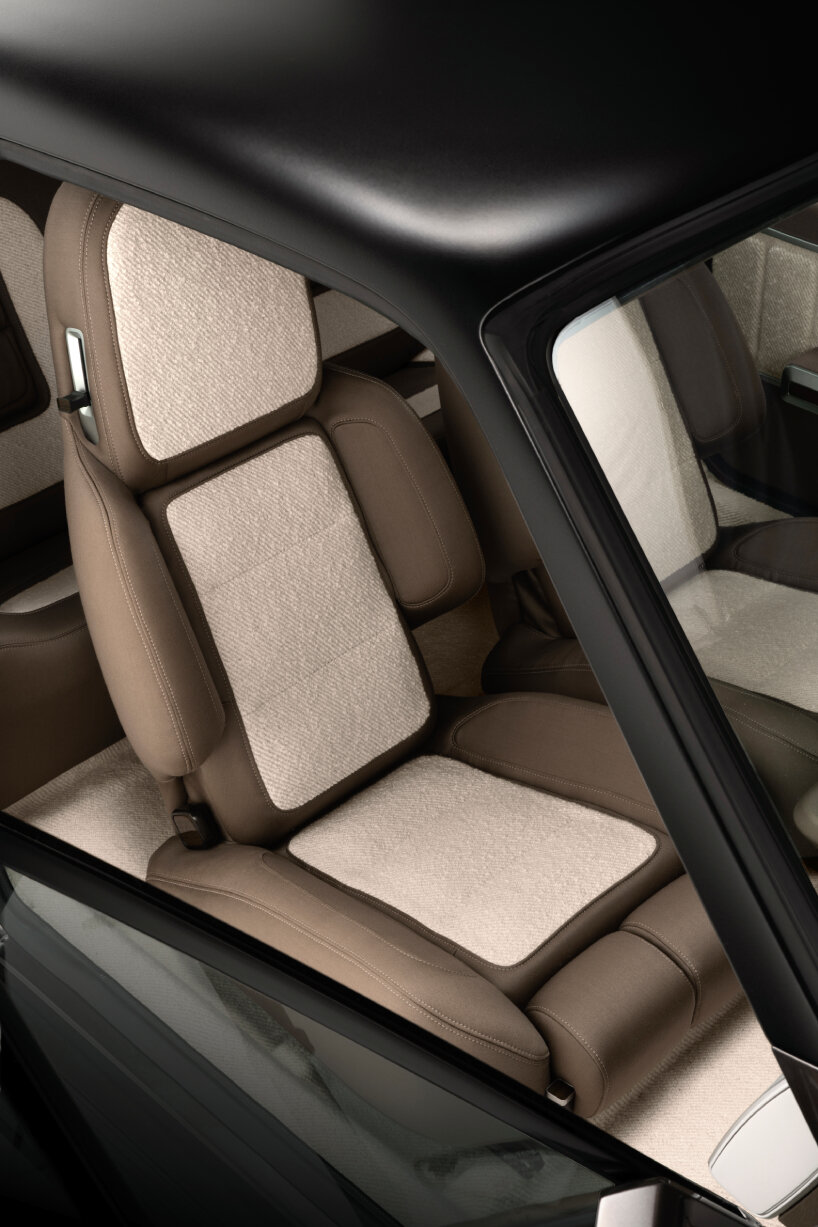
interior view of the Renault R17
SB (continued): We made the proportions really better, made the car wider, and put the wheels out because now it’s an electric car, so it’s slightly heavier than before. To make it work better, we had to make it wider. We couldn’t be good, so we put them in the right place. This made the proportions really good. Good design is about good proportions. Once you have the good proportions and everything is in the right place, our job was much simpler. We just made every detail simpler. This was my key approach to the project—to make everything as simple and minimalistic as possible without falling into the trap of not having enough details left that it becomes uninteresting.
If you see the grille, the calendar has the front profile with an inspiration of a shark. The grille itself has a lot of very interesting details when you see it up close. The same is true in the back of the car, where the tail lamp is. It’s super detailed, treated like a piece of architecture or furniture, something you could almost find in your house. But when you step away from the car, everything’s very simple and clean. This was the key feature I tried to achieve.
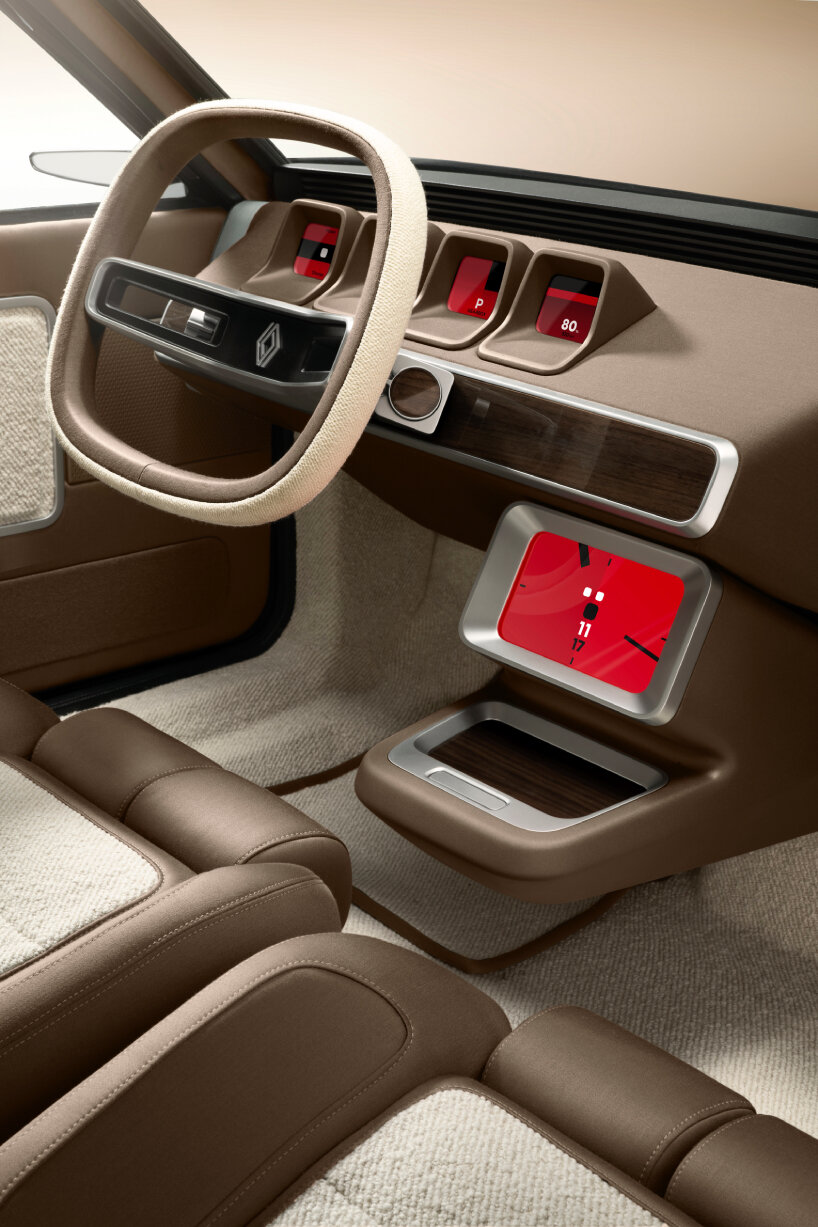
Ora Ïto imagines the interior to have a domestic feel
DB: What do you think’s the appeal of the Renault R17 electric restomod to traditional car fans?
SB: You know, there’s a time for everything. If you have a V12 engine petrol car, which is like a Swiss watch, it’s something else. But if you have just a two- or three-cylinder petrol engine, which is just there to take you from one place to another, and the car doesn’t have an electric engine, then for me, it’s just noise. At least, I feel that the European market has moved on in the sense that people have realized that electric cars or electric sidecars are the future, and there’s a lot of acceptance for it. But of course, when we’re talking about super high-end collector cars, like Swiss watches or jewelry, then petrol engines still make sense.
People who are seeing this car, because yesterday when we were discussing with other journalists, found it quite refreshing. They said, ‘Arsenali was a nice car, but it didn’t make history in the sense that it’s not part of the most important cars in world history.’ But suddenly, by making this restoration, by making it electric, by working with the guitar collaboration, it has become a cool design object. We appreciated that. So, I hope that people will appreciate that we are trying to make our history live in a better way, rather than destroying it.
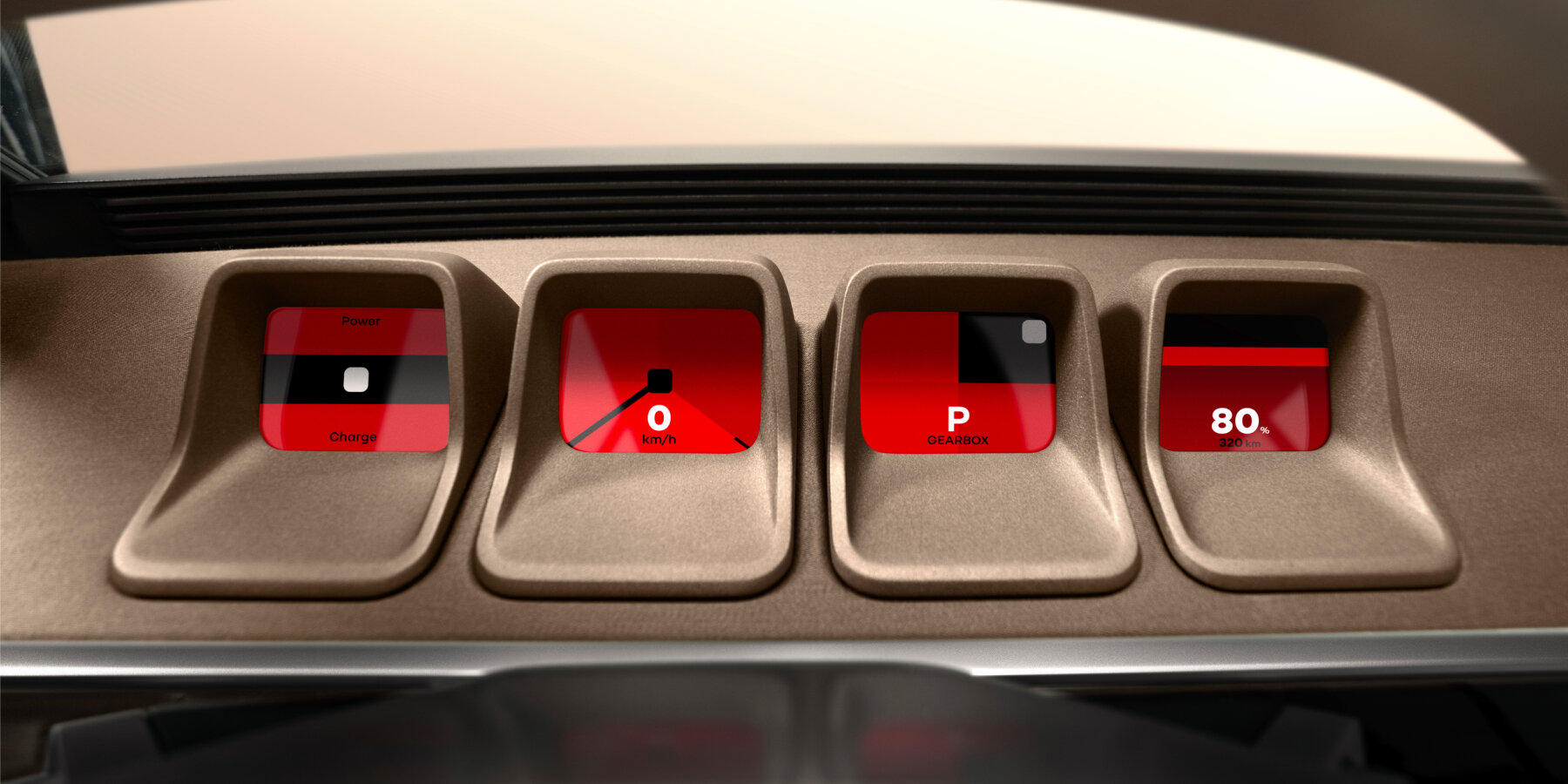
dashboard view of the electric restomod
DB: We read that the look of the Renault R17 has an almost cinematic feel to it. Did you draw from any movies or pop culture references for the design of the restomod?
OI: I’m sure I already have many friends from the music and movie industries, all asking to use the car in their next video clip, integrate it into a movie, or feature it in various events. So, I’m certain it will have a second life. Regarding the design inspiration from movies, I can easily imagine Steve McQueen driving this car, or even James Bond.
But beyond that, there’s also this idea of taking a normal model, making it new, and incorporating my design language—what I use in architecture, product design, and furniture—into a car. This gives the car a distinct look compared to others today, which often resemble Transformers with too much information, losing elegance and purity. I wanted to implement simplicity, clarity, and geometric harmony.
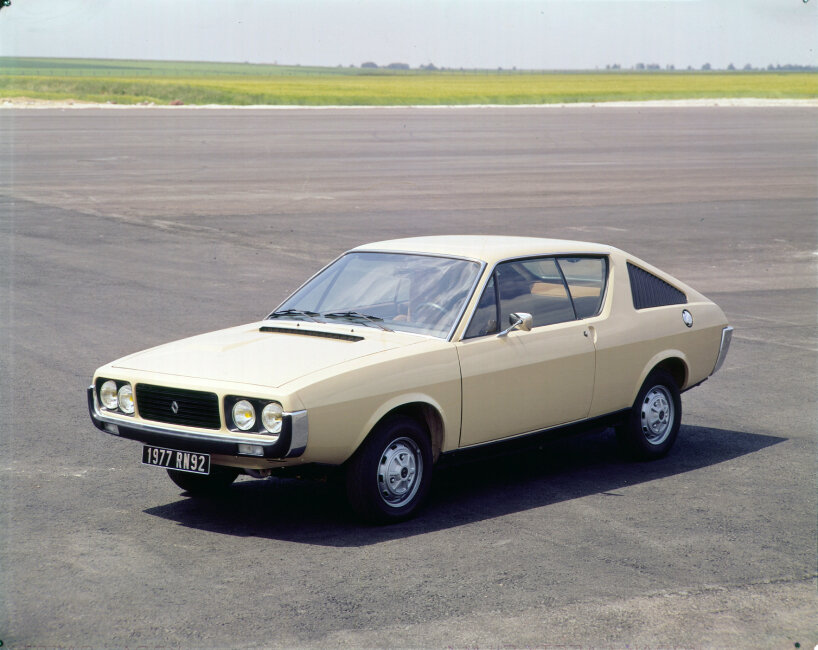
Renault’s R17 in the 1970s
OI (continued): The car’s design is cohesive and unified, with a lyrical quality—fun, yet nostalgic. I can imagine Austin Powers driving it; that’s an amazing reference. If you look at the car’s design, it plays with both the past and the future, like Back to the Future with the DeLorean. There’s also a feeling reminiscent of 2001: A Space Odyssey or even The Shining. It’s a methodographic project, and I can confirm that people from these industries have shown great interest in it, asking about using the car for artistic purposes.
I can even imagine Ed Sheeran presenting a new album with this car. The car itself is fascinating because it embodies the things I love, merging design with atmosphere. When you look at it or step inside, it feels almost like a 3D image, giving off a virtual vibe even in photographs. This is achieved through simplicity, careful reflection, and the way forms join together seamlessly. Even the car’s interaction with its environment is crucial. In Japan, for instance, there’s a philosophy that what’s behind a view is part of the view itself. Similarly, the car reflects its surroundings, making them an integral part of its design.
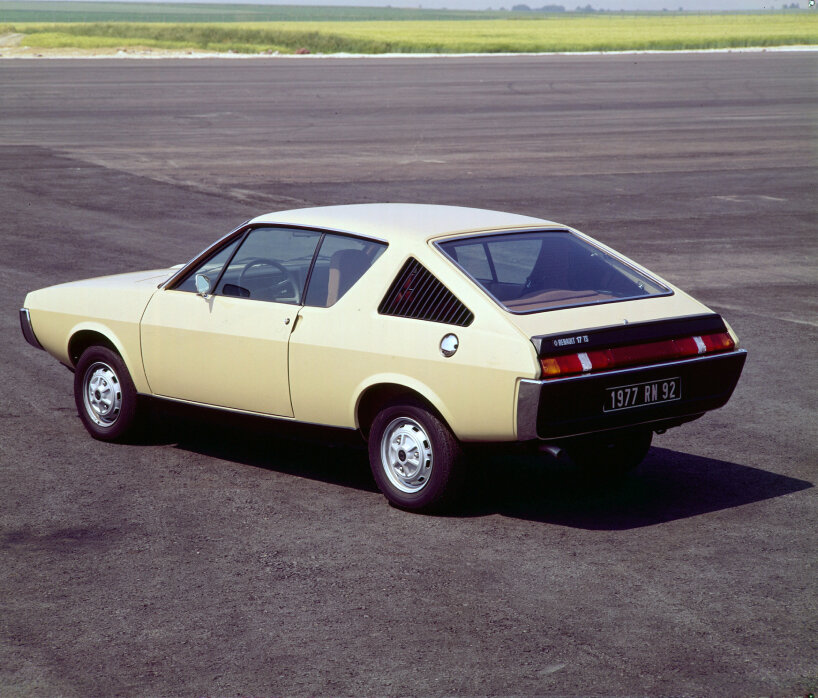
rear view of the Renault’s R17 in the 1970s
DB: You mentioned the atmosphere and the feeling viewers get when they look inside because, when we first saw the interior pictures, we couldn’t explain why, but we felt like we were sitting in a living room or an entertainment room, watching a movie on a large TV screen. The materials reminded us of our sofa, with that fuzzy, comfortable feeling, creating a very homey vibe—this feeling of warmth and familiarity.
OI: I couldn’t say it better myself. If I answered this question, I’d say almost exactly what you did. The goal was to create interiors that don’t resemble a typical car interior. It looks more like something domestic, like a living room. There’s also something unique when you’re inside and close the doors—the silence and the smell.
It doesn’t smell like a car; it smells like a living room. Experiencing it in real life is fascinating because, even though we designed this car, we are now discovering it. As we explore it, we find new aspects that come out naturally. I really appreciate this aspect of design—how, when you create an object, it can reveal even more over time. That’s a key element of a successful design, whether it’s a car or any other creation.
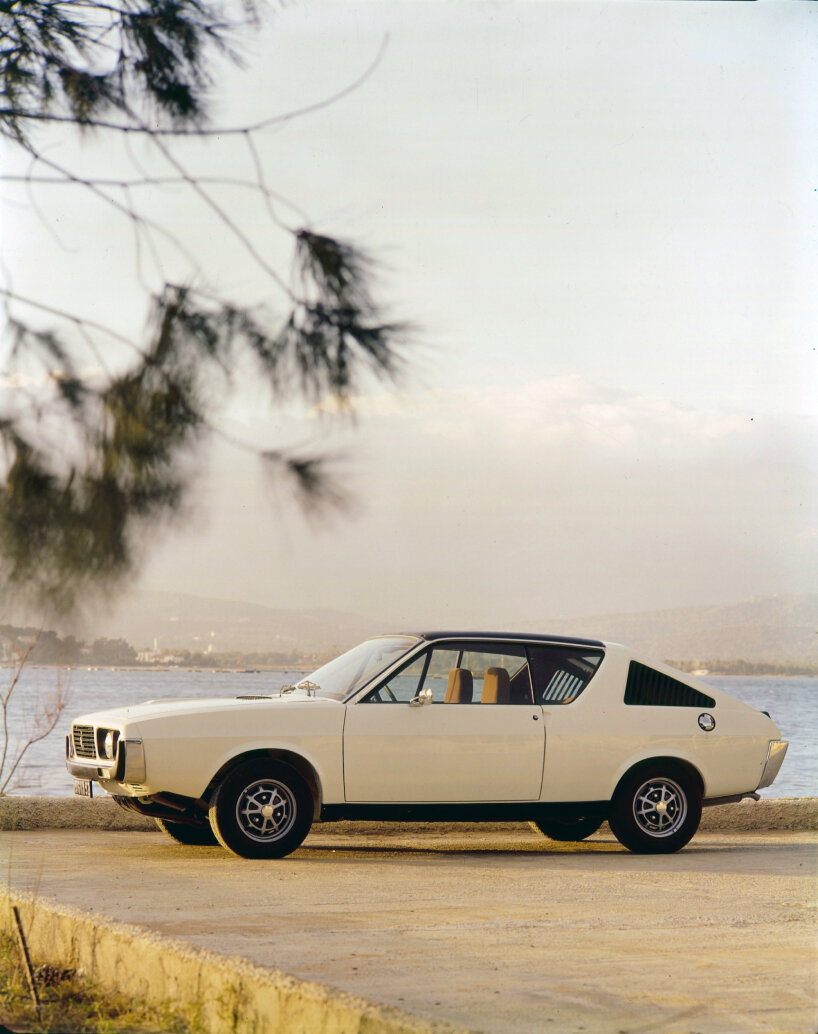
the Renault R17 electric restomod feels the same but looks different from its 1970s sibling
DB: And we’re wondering if this project could potentially influence the design direction of the other upcoming Renault restoration models?
OI: For every part that I could design, my goal is for those parts to be applied to this car. If you don’t look at the car in its total view but only focus on the rear, or the front, or the sides, you can picture many different elements. For example, the rear could be the front of a modern car, almost like a truck but with softer lines. It was important for me to show that I understand the brand well, that I understand the R17 and where my vision comes from.
I’m not saying these are the visions we must follow, but they are thoughts for Renault. I would be happy if we could continue this research and experimentation of maybe using certain elements. I say elements because we are not talking about the whole car but specific parts. If we designed a car for the market, it would be a car that answers all the problems and needs of the world right now. It would look completely different from the R17.
The R17 is exactly that—a future style and a design decision. The ideas, models, and everything else. If I had done it differently, it would still have my touch but wouldn’t be this, because this integrates elements of Renault’s old design language from decades ago, with a bit of Fuego influence. I was in love with the Renault Fuego.
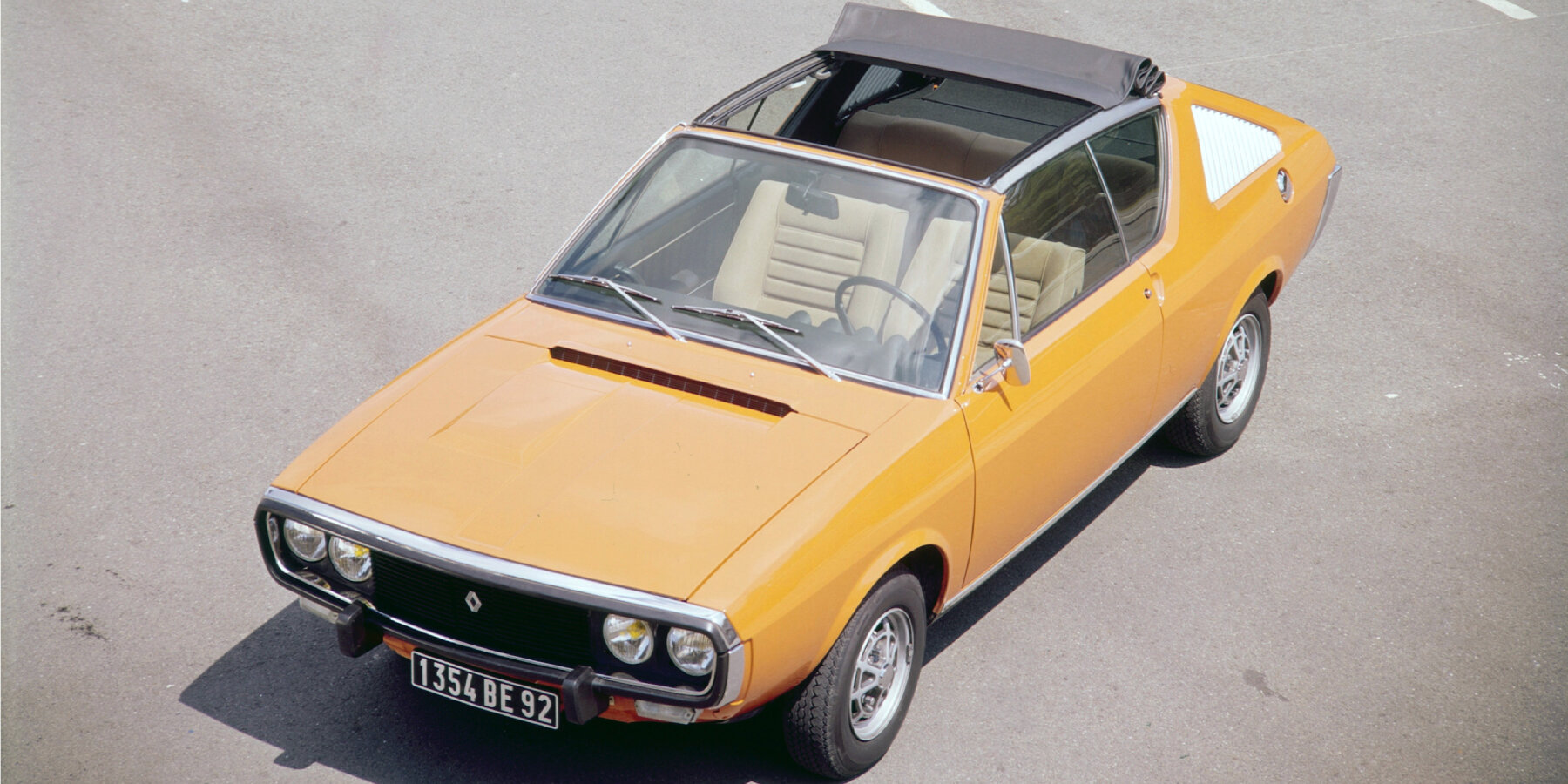
orange version of the R17
DB: There must be a lot of back and forth between you and Sandeep during the design process.
SB: Not so much. We had time on our side, right? We have eight months to do this project from the breeze to when it was shown. It was quite fast. But of course, like all designers, he told me every now and then we put things back into question. Then we find reason to continue in the right way.
OI: I learned a lot by working here, and working with such a cool team was really good. From a sketch, thirty minutes later, we almost have a rendering, 3D, and construction. It was a luxury way of working, very professional, inspiring, and changing. It’s the best for me—exactly how a design collaboration should be. Everybody brings their talent, and nobody tries to talk over the other; everyone stays in their position. In the end, we always make the same choice. If we agree, it goes forward; if not, we change some things. What’s most incredible is that we were in agreement about 80 to 85 percent of the time.
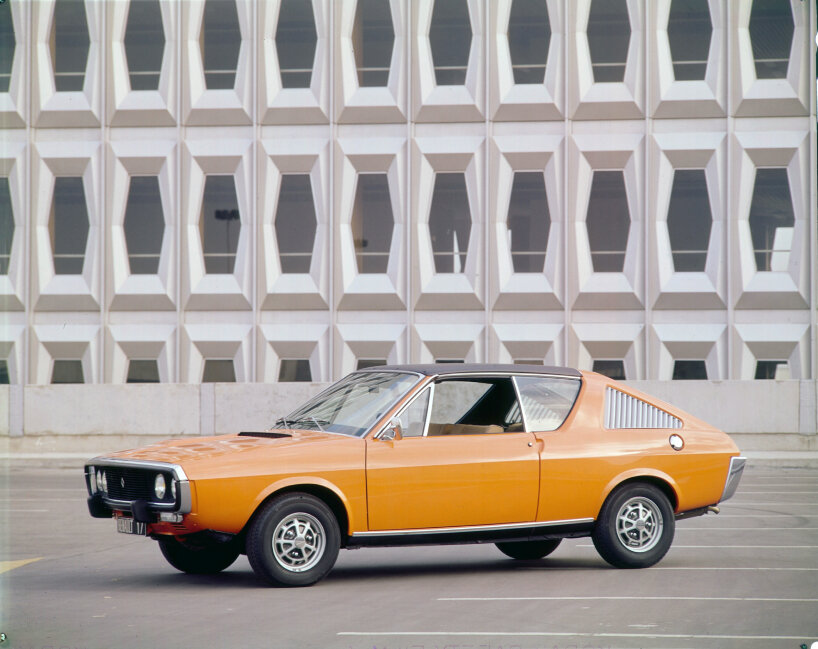
the electric restomod has the same cabin, doors, windows, glazing, seals, and underbody from the R17
DB: Did you have to compromise at some point?
OI: No, not even stuff like that. For example, I didn’t like the yellow line because it was white before, and I was used to it, and the reflection was white. But now that I see the yellow light, I have to say this is something I really love, and I wouldn’t change it. I was really in love with that.
DB: How about you, Sandeep, what do you think is the potential influence of the Renault R17’s design in the direction of future restomods?
SB: We do these collaborations to get inspired because the car design world, while amazing, can sometimes lead to turning in circles around the same ideas. For companies to break away from those cycles, one reason for this collaboration is to inspire ourselves and our teams, to see another point of view for the project. This was really important for us, and that’s why Ito was with us, which is great. Whatever he’s done and whatever we’ve done together is very inspiring for us and our teams. It will filter into the inspiration book of our designers because this contribution exists now.
But I think another reason we collaborated with Ito is because his design language is very humanistic. He always thinks from the human point of view—what the experience will be for the person in this car, this architecture, or this atmosphere. That’s something Renault as a brand would like to aspire to in the future. We want to be more human-centric, more focused on the human experience. That thought is why we sought out Ito for this collaboration, and it’s great he accepted. We’re definitely moving in a more humanistic direction.
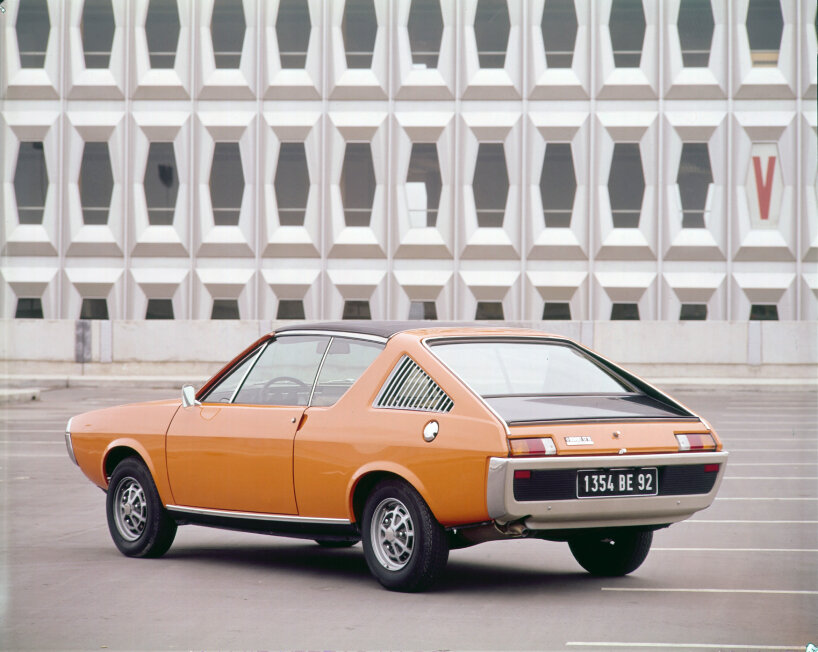
the car’s design is cohesive and unified, just like the new R17
OI: That was the time I wanted to cry, I swear. He’s elegant, smart, nice, professional. I’m a very complicated guy to work with, but when I face people like Sandeep, it’s easy. I’m very happy with this collaboration because, in one sense, I think I helped his design team realize that if we can do these things, they can too.
I think they’re using us for that, and it showed me that I’m not such a complicated guy to work with after all. Some details were very important to me—really detailed, but as we said, the details aren’t just details in this project because they make the difference between the original. I know Sandeep worked hard to help with these details, which may not have been so important for the direction of the project, but that made me feel comfortable.
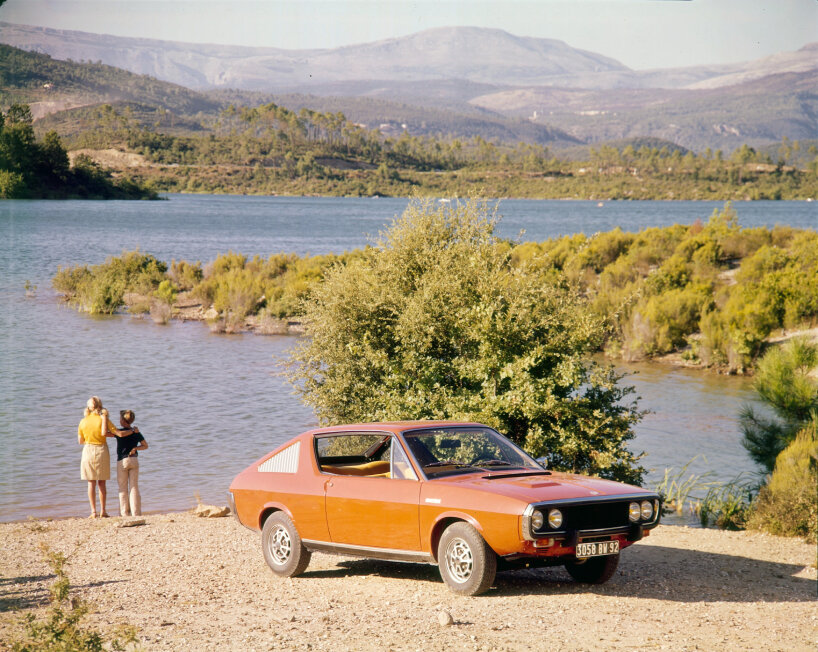
there’s no need for an extremely distinct look for the electric restomod, says the French designer
Sometimes, you can say, ‘Okay, yes, I’m working on this concept car with you,’ but it’s based on something I love and feel close to in terms of design, though it doesn’t fully represent my design philosophy. Adding something to something I didn’t create from scratch was a big risk for me. I took it because it was a dream to work on a car, to realize a childhood dream. I knew he understood I was sensitive about certain details, but for me, those details are gold. I can say that if we had fought to pass on all those ideas, I might have been disappointed. I would have done it, because you can’t say no, but I wouldn’t have been proud of what we produced. I would have considered it just a step toward the next experience.
I was almost ready to feel that way, but in the end, thanks to Sandeep, I am now as happy as if I had controlled it from A to Z. That’s the complete experience. Our ideas may be different sometimes, but the next day, I saw that what I cared about had suddenly appeared. I thought we weren’t supposed to be able to change this, and yet it happened. The ambition of the project evolved, which is interesting because not every collaboration works like that. The level of ambition grew as the project progressed. I don’t think the mission was so far-reaching at the start. I’m not saying they didn’t have ambition, but we went very far, and the mission expanded as the project moved forward.
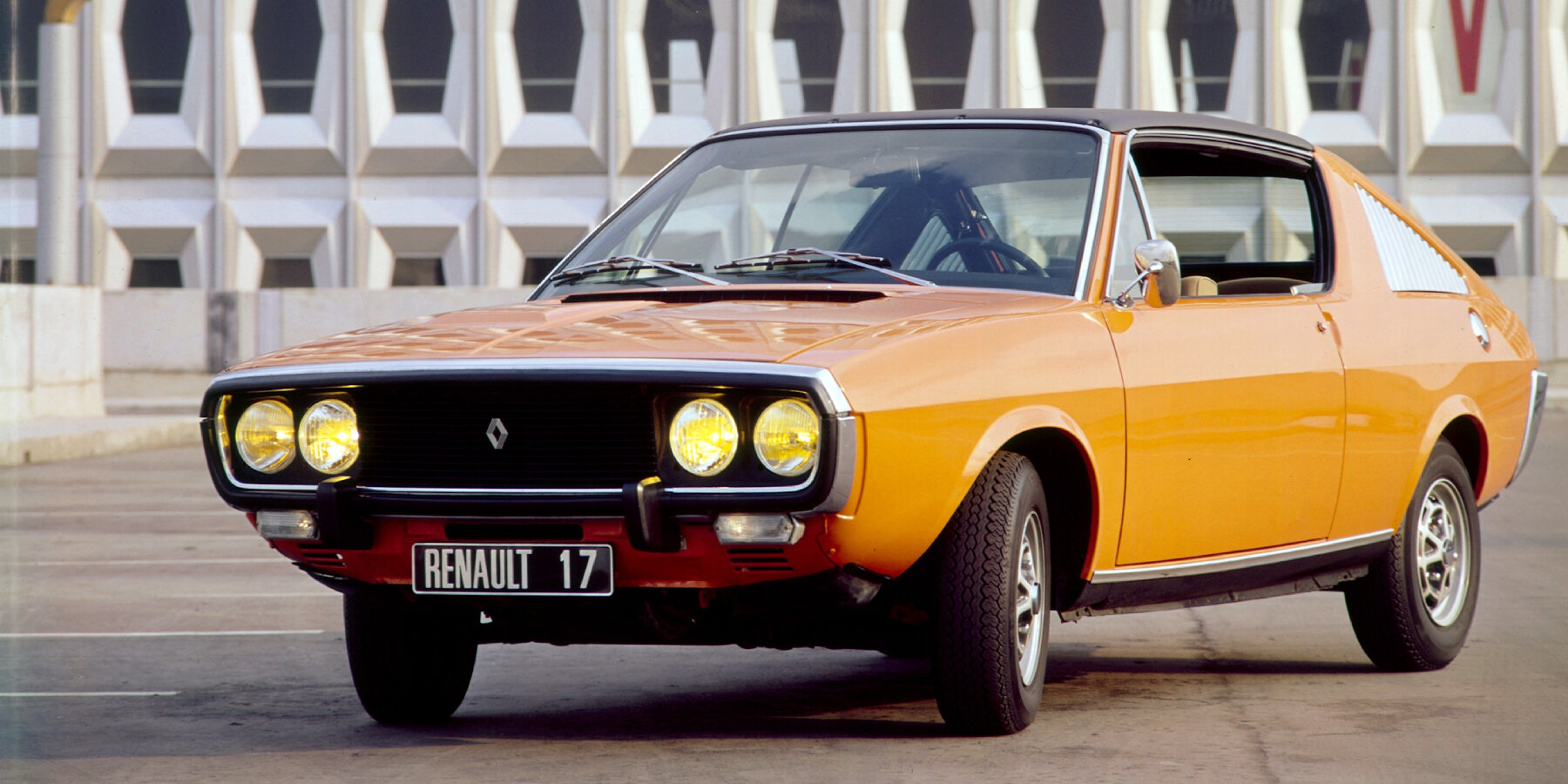
the original mode as a base for the new R17
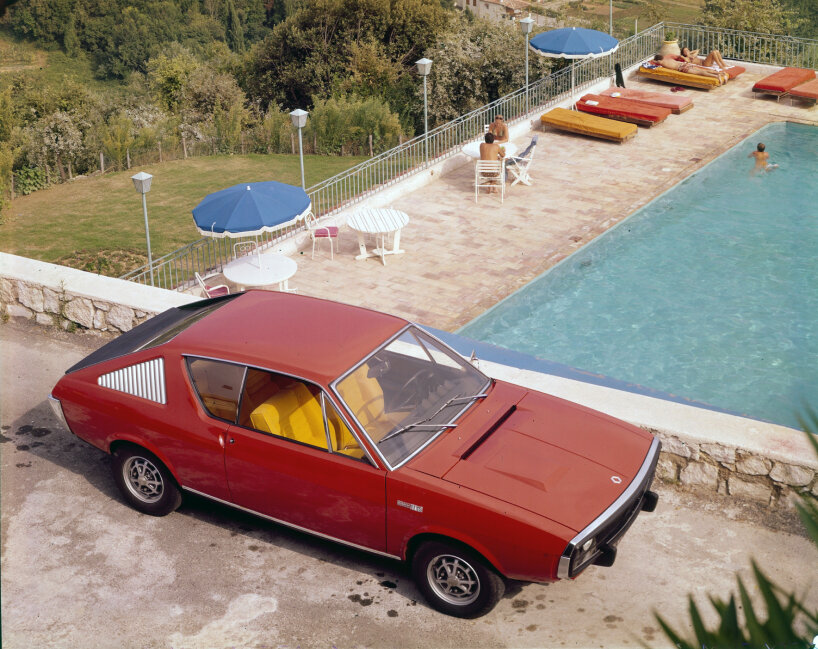
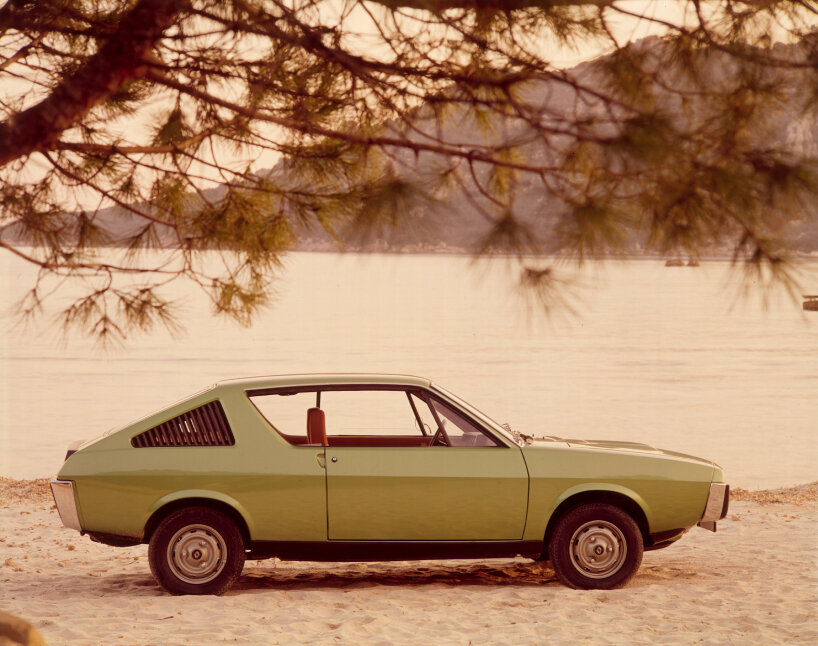
project info:
project title: R17 electric restomod x Ora Ïto
manufacturer: Renault | @renaultgroup
photography: Lionel Koretzky | @lionelkoretzky, @pil.vpr
